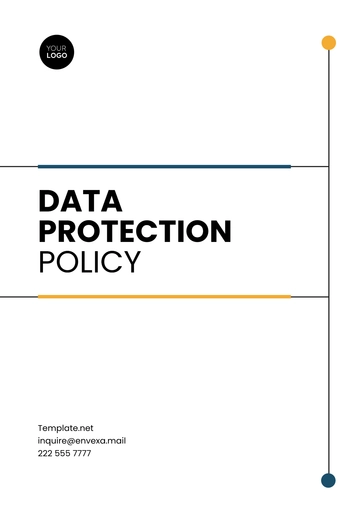Free Sales Presentation & Collateral Policy & Procedure

I. Introduction
Welcome to [Your Company Name]'s Sales Presentation and Collateral Policy & Procedure document. This guide is designed to standardize our approach to sales presentations and collateral, ensuring consistent quality and messaging. The document outlines our policies, procedures, and best practices for creating, distributing, and maintaining sales materials. The information contained herein is relevant for all employees, especially those involved in sales, marketing, and customer relations.
II. Objectives
The objectives of this Sales Presentation and Collateral Policy & Procedure are threefold:
To standardize the procedures and guidelines for creating and distributing sales presentations and collateral across all departments.
To ensure a uniform and consistent approach in messaging and branding in every piece of sales collateral and each presentation created.
To improve customer engagement and conversion rates through high-quality and coherent sales materials.
III. Scope
The scope of this policy is expansive and applies to a variety of sales presentations and collateral types, aiming to cover all potential scenarios and needs. The materials in focus include, but are not limited to:
Slide Decks: These are the most commonly used format for sales presentations, often used in face-to-face meetings or webinars.
Brochures: Physical or digital, these provide a snapshot of the products or services offered and are often left with potential clients for later reference.
Whitepapers: These are in-depth reports that educate the audience, helping them understand an issue, solve a problem, or make a decision.
Case Studies: These are real-world examples that show how your company has solved a problem for a particular client, often used to validate the effectiveness of your product or service.
Video Content: This could be anything from short explainer videos to comprehensive tutorials, helping to engage clients on a more interactive level.
IV. Sales Presentation Guidelines
The subsequent chapter provides a detailed framework for creating and distributing sales presentations. The goal is to set the standards and best practices to ensure that each presentation not only aligns with our branding guidelines but also effectively engages our potential clients. The table below outlines the essential elements of a sales presentation and the department responsible for each.
Element | Guidelines | Responsible Department | Additional Details |
Content Creation | Use company-approved templates and language | Marketing | Templates must be updated annually. Language should be concise and geared toward target audience's needs. |
Format | PPTX, PDF | Marketing | PPTX for interactive presentations and PDF for static, printable versions. Ensure that the file size is manageable for easy sharing. |
Distribution | Via email, cloud storage | Sales | Use encrypted emails for sensitive content. Maintain an organized cloud storage system for easy access. |
Updates | Quarterly | Marketing | Keep the content current with product updates, market trends, and customer feedback. |
V. Collateral Development
This chapter offers an in-depth guide for developing sales collateral across a variety of formats. The aim is to provide a structured approach to creating materials that resonate with our target audiences and achieve specific business objectives. Below, we break down the types of collateral and outline a standardized procedure for their creation.
A. Types of Collateral
Whitepapers: Whitepapers provide a comprehensive look into a subject matter, often offering solutions to problems in a formal, academic style.
Ebooks: Ebooks are less formal than whitepapers and generally cover topics in a more digestible manner. They can range from step-by-step guides to informational pieces.
Case Studies: Case studies provide real-world examples of how our product or service has solved a customer's problem, backed by measurable results.
Blogs: Blog posts are shorter pieces that aim to educate, inform, or entertain, thereby building brand authority and driving traffic to our website.
Infographics: Infographics use visual elements to simplify complex information or data, making it easier for the audience to grasp.
Videos: Video content can vary from product demonstrations to customer testimonials or educational content. Videos engage audiences through audio and visual elements.
B. Procedure for Creation
Identify Target Audience and Objective: Determine who the collateral is intended for and what action you want the audience to take after consuming the content. This will guide the rest of the creation process.
Choose the Appropriate Type of Collateral: Based on your target audience and objectives, decide on the type of collateral that would be most effective. For example, for educating potential clients on a complex service, a whitepaper might be suitable.
Draft Content According to Company Guidelines: Once the type of collateral is chosen, draft the content. Make sure it adheres to company style guidelines and effectively communicates the intended message.
Review and Approve Final Version: Before publishing or distributing, the final draft should undergo a thorough review process for accuracy, coherence, and compliance with company guidelines. This ensures that the content meets our high standards of quality.
VI. Distribution Channels
This chapter delineates the approved channels for distributing our sales presentations and collateral, along with the procedures to be followed for each. The objective is to ensure that all materials reach their intended audience in a manner that is both effective and consistent with [Your Company Name]'s branding and communication strategies.
Channel | Procedure | Responsible Department |
Company Website | Upload the collateral to a dedicated section or resource hub on the company website. Ensure the content is searchable, and optimize metadata and SEO elements. | Marketing |
Use the company's CRM system to distribute collateral via targeted email campaigns. This may include newsletters, segmented promotional emails, or tailored follow-ups. | Sales | |
Social Media | Share and promote the collateral according to the predefined social media calendar. This includes selecting the right platforms, optimal posting times, and using relevant hashtags. | Marketing |
VII. Documentation & Record-keeping
It's crucial to have an organized system for documenting and storing all sales presentations and collateral. All such materials must be archived in the designated [Cloud Storage System]. This ensures that any team member can access these resources when needed and helps in maintaining a uniform brand message.
In addition to archiving the actual materials, a meticulous record should be kept for each piece of collateral or presentation. This record should include important details such as the distribution date, the targeted audience, and the channels through which it was distributed. Additionally, any relevant response metrics like click-through rates, engagement levels, or conversion rates should also be logged.
By doing so, we are not just storing files but accumulating a data-rich history for each material. This data can be invaluable for analyzing the effectiveness of our sales materials and making informed decisions for future initiatives.
VIII. Metrics & KPIs
To measure the effectiveness of our sales presentations and collateral, it's important to track specific metrics and key performance indicators (KPIs). This not only helps us to understand how well our materials are performing, but it also provides insights into areas for improvement. Below is a table outlining the metrics that should be consistently monitored, along with their corresponding KPIs.
Metric | KPI | Additional Details |
Engagement | Click-Through Rate (CTR), Time spent | CTR measures the percentage of clicks per impressions. Time spent indicates how long users are interacting with the material, a strong indicator of engagement. |
Reach | Impressions | This KPI quantifies the number of people who have seen the material, helping us assess the extent of our audience reach. |
Conversion | Leads generated | Leads generated refers to the number of prospective clients or customers who have shown interest as a direct result of the material. This could be filling out a contact form, downloading a whitepaper, or any other predefined action. |
Monitoring these metrics and KPIs will provide a quantitative basis for evaluating the success of our sales collateral and presentations. This data should be reviewed on a regular basis and cross-referenced with our objectives to ensure alignment with our overall strategy.
IX. Timeline & Budget
Proper planning is crucial for the successful execution of our sales presentation and collateral strategy. Therefore, we've laid out a timeline specifying the key milestones for each quarter, along with the budget allocated to each phase. The inclusion of Q4 is intentional; it's dedicated to recalibration and planning for the next fiscal year. Below is a table detailing these milestones and their corresponding budgets.
Quarter | Milestone | Budget | Additional Details |
Q1 2050 | Content Creation | This budget covers all aspects of content creation, including research, writing, design, and editing. | |
Q2 2050 | Distribution | This covers the cost of using various channels to distribute the content, including CRM software subscriptions, social media advertising, and other distribution methods. | |
Q3 2050 | Metrics Evaluation | Funds allocated for the tools and man-hours required for detailed analytics and KPI assessment. | |
Q4 2050 | Recalibration & Planning for Next Year | This quarter is for assessing the year's performance and adjusting the strategy and budget for the next fiscal year. |
X. FAQs
What formats are acceptable for sales presentations?
We recommend using PPTX or PDF formats for sales presentations to ensure compatibility and professional appearance.
How often should sales collateral be updated?
Sales collateral should be updated quarterly to reflect the most current information, market trends, and company offerings. However, high-priority materials may be updated more frequently.
Is there a standard template for creating sales collateral?
Yes, we provide company-approved templates for various types of collateral, such as whitepapers, ebooks, and slide decks, to maintain brand consistency.
Who is responsible for the distribution of sales collateral?
The Sales Department is generally responsible for distributing sales collateral, often through our CRM system for emails and via other channels for different formats.
How are the effectiveness and ROI of the sales collateral measured?
We use various KPIs such as click-through rate (CTR), time spent on content, impressions, and leads generated to assess the effectiveness and ROI of each piece of sales collateral.
- 100% Customizable, free editor
- Access 1 Million+ Templates, photo’s & graphics
- Download or share as a template
- Click and replace photos, graphics, text, backgrounds
- Resize, crop, AI write & more
- Access advanced editor
Establish clear guidelines with the Sales Presentation & Collateral Policy & Procedure Template from Template.net. This editable and customizable document sets the standards for creating and using sales presentations and collateral. Easily editable in our AI Editor tool, it offers a structured approach to ensure consistency and compliance. Ideal for companies aiming to maintain high-quality sales materials and presentations.
You may also like
- HR Policy
- Restaurant Policy
- Company Policy
- Accounting Policies and Procedures
- Website Policy
- Privacy Policy
- Safety Policy
- School Policy
- IT and Software Policy
- Law Firm Policy
- Construction Policy
- Interior Design Policy
- Travel Agency Policy
- Education Academic Policy
- Security Policy
- Real Estate Policy
- Expense Policy
- Software Policy





























